POW/MIA Flag Back Atop White House
Stoking a bizarre fantasy that will not die.
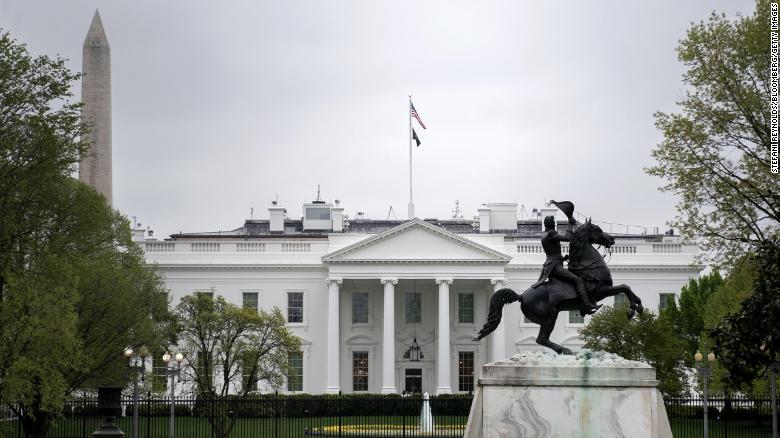
CNN (“POW/MIA flag returns atop the White House“):
The POW/MIA flag was once again flying atop the White House Friday morning after it was moved to another location on the White House grounds in the final months of the Trump administration.
A White House official said the flag went up overnight and will permanently remain atop the residence of the White House.
Friday marks National Former Prisoner of War Recognition Day.
In 2019, former President Donald Trump signed a bill requiring the POW/MIA flag be flown with the US flag on certain federal properties at all times.
While it flew on top of the residence for some time, the flag was moved to another location on the White House grounds, according to a video posted last June, prompting frustration from some veterans groups and lawmakers.
Shortly after President Joe Biden took office in January, a group of bipartisan lawmakers — Democratic Sens. Maggie Hassan and Elizabeth Warren and Republican Sen. Tom Cotton — urged the President to return the flag to the top of the White House.White House press secretary Jen Psaki said during Friday’s press briefing that the letter to the administration requesting the flag be flown above the residence was “a true display of bipartisanship.”
When Tom Cotton and Elizabeth Warren agree on something, it’s either truly bipartisan or just really, really weird. In this case, it’s both.
The POW/MIA flag has its origins in 1971, as we were beginning our slow withdrawal from the long war in Vietnam, and the bizarre mythology that large numbers of American soldiers were being secretly held in prisoner camps. According to the group behind the flag,
The League’s sole mission is to obtain the release of all prisoners, the fullest possible accounting for the missing and repatriation of all recoverable remains of those who died serving our nation during the Vietnam War.
The League originated on the west coast in the late 1960s. Believing US Government policy of maintaining a low profile on the POW/MIA issue – while urging family members to refrain from publicly discussing the problem – was unjustified, the wife of a ranking POW initiated a loosely organized movement that evolved into the National League of POW/MIA Families. In October 1968, the first POW/MIA story was published. As a result of that publicity, the families began communicating with each other, and the group grew in strength from 50 to 100, to 300, and kept growing. Small POW/MIA family member groups, supported by concerned Americans, met with the North Vietnamese delegation in Paris, and countless thousands of Americans flooded them with telegraphic inquiries regarding the prisoners and missing, the first major activities in which there was widespread public participation
As to the flag itself, they explain,
In 1970, Mrs. Michael Hoff, an MIA wife and member of the National League of POW/MIA Families, recognized the need for a symbol of our POW/MIAs.
[…]
On March 9, 1989, an official League flag – flown over the White House on National POW/MIA Recognition Day 1988 – was installed in the US Capitol Rotunda as a result of legislation passed overwhelmingly on a bipartisan basis during the 100th Congress. In a demonstration of further bipartisan Congressional support, the leadership of both Houses hosted the installation ceremony, at which League Executive Director Ann Mills-Griffiths delivered remarks representing the POW/MIA families.
The League’s POW/MIA flag is the only flag ever displayed in the US Capitol Rotunda where it stands as a powerful symbol of America’s determination to account for US personnel still missing and unaccounted-for from the Vietnam War. On August 10, 1990, the 101st Congress passed US Public Law 101-355, which recognized the League’s POW/MIA flag and designated it “the symbol of our Nation’s concern and commitment to resolving as fully as possible the fates of Americans still prisoner, missing and unaccounted for in Southeast Asia, thus ending the uncertainty for their families and the Nation”.
The importance of the POW/MIA flag lies in its continued visibility, a constant reminder of the plight of America’s UNRETURNED VETERANS. Other than “Old Glory,” the League’s POW/MIA flag is the only flag ever to fly over the White House, displayed since 1982 in this place of honor on National POW/MIA Recognition Day.
Passage by the 105th Congress of Section 1082 of the 1998 Defense Authorization Act required that the League’s POW/MIA flag fly six days each year: Armed Forces Day, Memorial Day, Flag Day, Independence Day, National POW/MIA Recognition Day and Veterans Day. It must be displayed at the White House, the US Capitol, the Departments of State, Defense and Veterans Affairs, the headquarters of the Selective Service System, major military installations as designated by the Secretary of Defense, all Federal cemeteries and all offices of the US Postal Service. In addition to the specific dates stipulated, the Department of Veterans Affairs voluntarily displays our POW/MIA flag 24/7. The National Vietnam Veterans, Korean War Veterans and World War II Memorials are now also required by law to display the POW/MIA flag daily. Most State Capitols have adopted similar laws, as have local governments nationwide.
LEAGUE POLICY ON POW/MIA FLAG DISPLAY was adopted at the League’s 32nd Annual Meeting in June 2001. Members present overwhelmingly passed the following resolution: “Be it RESOLVED that the National League of POW/MIA Families strongly recommends that state and municipal entities fly the POW/MIA flag daily to demonstrate continuing commitment to the goal of the fullest possible accounting of all personnel not yet returned to American soil.”
As best I can determine, the Vietnam War was the first in which we displayed a fetish for returning the bodies of all our fallen soldiers home. In past conflicts, we simply buried them where they fell. Because of that, and the fact that remains are often never found given modern munitions, a jungle environment, and nighttime fighting, an obsession developed over the notion that our guys were missing owing to some nefarious plot.
In the early 1980s, a cottage industry of movies, including “Uncommon Valor,” “Missing in Action” (and two sequels!), and “Rambo” featured contemporary heroes rescuing POWs still—inexplicably—being held prisoner in Vietnam. It’s in this environment that the US issued a medal for those who had been captured (with eligibility going back to World War I) and started flying the POW/MIA flag.
To the extent that families still don’t know what happened to their loved ones, it’s tragic. But the war has been over since 1975 and American participation since 1973. No American prisoner has been released since April, 1973 and the only American serviceman to come home since, Marine Pvt. Robert Garwood, who returned in 1979, voluntarily stayed behind in Vietnam after the war and was court-martialed for collaborating with the enemy.
In 1984, President Ronald Reagan ordered the NSA and other signals intelligence assets in the Pacific to look for evidence of remaining Americans. The effort continued for years, producing none. In 1993, twenty years after the war, a Senate commission led by decorated Vietnam veteran John Kerry concluded there was “no compelling evidence” that any US servicemen are being held in Southeast Asia and that claims of “hundreds or thousands of Americans languishing in camps or bamboo cages” are “arithmetically impossible.”
That was 28 years ago. An 18-year-old who went to Vietnam in 1964, after the Gulf of Tonkin incident that began our serious escalation, would be 76 now. One that went in 1973, our last year, would be 67. The notion that they’ve inexplicably been kept alive all these years—or indeed, would still be alive if held in captivity that long—is absurd.
That politicians are still stoking this myth—which we’ve known to be such for decades—is bizarre at best and cynical at worst.

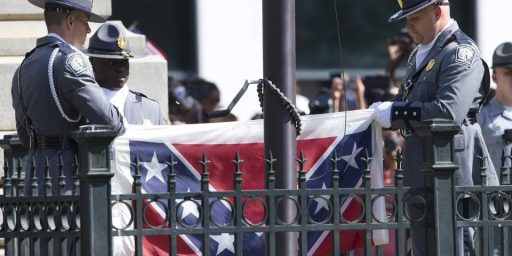
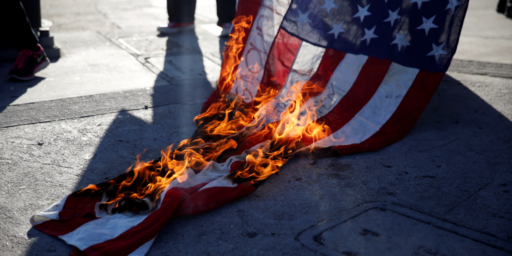
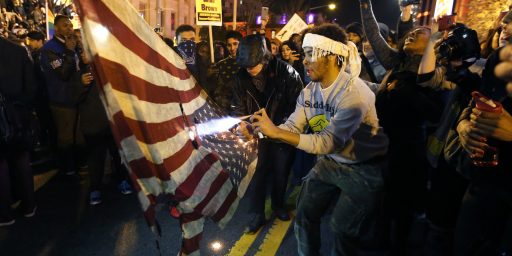
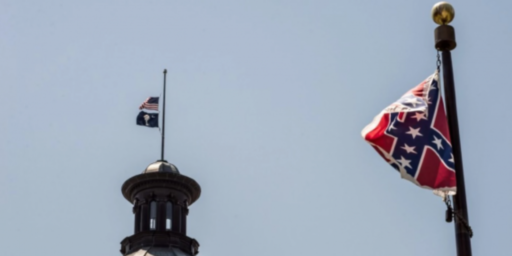
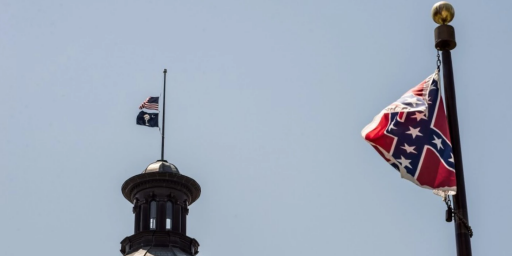
And let’s not forget the grifters who raised money for “rescue missions”.
Why do you hate veterans, Joyner? What kind of pinko rag are you running here?
I suppose there may be a few on the fringe who still believe there are American soldiers somehow being held as POWs in Vietnam, but at this point the focus has become identification and repatriation of remains. And this is actually still happening (article from July 2020):
That speaks to another way that the Vietnam war was/is different from other wars. Last week, there was an article on how modern forensic techniques are beginning to be used on identifying remains of soldiers going back to WWI.
In the weeks leading up to Memorial Day, across France and Belgium, volunteers from the neighboring communities will be tending the graves of American servicemen. Honoring their sacrifice in a manner that we don’t do at home.
@Mikey: I guess I’m just not a “remains” kind of guy. I find it weird that we started shipping our dead home, especially in a war that was ostensibly about winning hearts and minds.
The first really stupid thing to come from the Biden administration.
Historical Fun Fact:
Embalming in the U.S. didn’t became popular until the Civil War, because so many people wanted their fallen family member returned home for burial.
https://www.civilwarmed.org/embalming1/
@Michael Reynolds:
The Biden admin probably looks at it as a cost free reach across the political spectrum. It is a case of no harm, no foul. Only we cynics will complain.
@James Joyner:
A supposition; American leadership never believed that Vietnam was winnable, at most hoping for a Korea-like stalemate at best. The vision of thousands of American graves returning to jungle or plowed over for crops would come at too high a political cost if that occurred. Safer to bring the bodies home. Not to forget, the view that Asians were subhuman and not to be trusted, while Germans, for all their faults were white like Americans (or at least the Americans that counted).
@Mikey:
This may be true for the government, but the POW/MIA movement has largely become another Republican “evil global conspiracy” grift, conning traumatized families out of their money by spinning conspiracy theories of how their dead relatives are still alive and the government is just lying about it and we can get them back if you give us just a few thousand more to continue searching for them.
@Sleeping Dog:
Cost free for Biden maybe, but legitimizing con artists is not cost free for the country.
I have known several Vietnam War vets over the years. Once when there was talk about MIA a friend of mine who I met in the early ’70s after his discharge from the Marines said: “the planes that were shot down had been bombing villages of grass huts and killing their babies. what do you think those people did to the crews when they got ahold of them.”
@James Joyner:
We started that during the middle of the Korean War, except (I think) for the Navy. The only reason we didn’t bring home the dead before that was logistical limitations. If we ever get into another war where thousands are killed daily (which I hope never happens), I’m sure we’ll return to local burials.
As for the topic of this post, I don’t really have a strong opinion, but I think Trump moving the flag to a special area on the WH grounds was more appropriate than having it permanently on top of the WH itself.
We could probably talk about civil-military relations. This kind of performative “honoring” along with other carve-outs and special treatment for veterans (and the constant “thank you for your service)”) are turning vets into a kind of special class in society. That is turning some vets into entitled douchebags.
Promoting the POW/MIA flag as secondary in importance only to the national flag is along the same lines.
My view is that is much more toxic to civil-military relations than, for instance, a former general like Austin serving as SECDEF.
@Stormy Dragon: I had never heard about that before. But I just did some searching and found this book:
https://www.amazon.com/Prisoners-Hope-Exploiting-Myth-America/dp/0679430164
These parasites prey on the most traumatized victims.
@Andy:
If I never hear “thank you for your service” again, it’ll be too soon. Nobody needs to thank me. I got much more out of my military service than I put in. Thanking me for that just makes me uncomfortable.
…thank you for your service…
I never say that.
I just tell them that I am glad they didn’t come home in a body bag.
@Stormy Dragon:
Ugh. That’s terrible, and sadly predictable considering who’s pushing it.